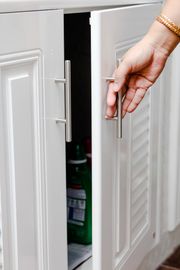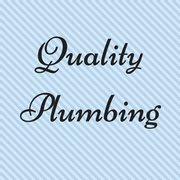
If your water bill continues to rise and you don’t know why, a leak may be hiding somewhere in your home. You might also notice symptoms like a constant running water noise, inconsistent meter readings, or a foul odor within your property. To identify its source, conduct some investigative work. The following leak detection guide will give you a few tips to help you resolve the issue.
What to Know About Leak Detection
1. Inspect Walls & Flooring
Although you can’t directly observe pipes leaking within your walls, you may find traces of their damage. Thoroughly inspect the walls, ceiling, and flooring of your property for signs of discoloration, mold, or sponginess. You may also notice warped areas or disintegrating paint. Look closely at the areas located beneath bathrooms, which are at higher risk for leaks.
2.  Check Cabinets
Check Cabinets
Look underneath your kitchen and bathroom sinks for any signs of moisture. Since they may not be readily apparent in the dim enclosure, use a flashlight to fully inspect the area. You may notice wet areas, buckling or peeling paint, or mildew, all which signify the presence of a leak.
3. Survey the Basement
If you have a crawl space, survey it for signs of a problem. Since water can quickly travel down the internal structures of a home, it won’t take long to manifest at the bottom. As with other areas, check for signs of moisture, stains, or mold. You should also assess exposed pipes for rust and mineral accumulation.
If you still can’t find the source of your leak, consult the experts who can help. The professionals from Quality Plumbing in Honolulu, HI, utilize a variety of specialized techniques to aid in leak detection and mitigation. The residential and commercial plumbing team also offers same-day and 24/7 emergency services for when you need them most. For more information about their services, visit the website, and call (808) 384-0412 today to schedule an appointment. You can also follow them on Facebook for more plumbing tips.
About the Business
Have a question? Ask the experts!
Send your question

